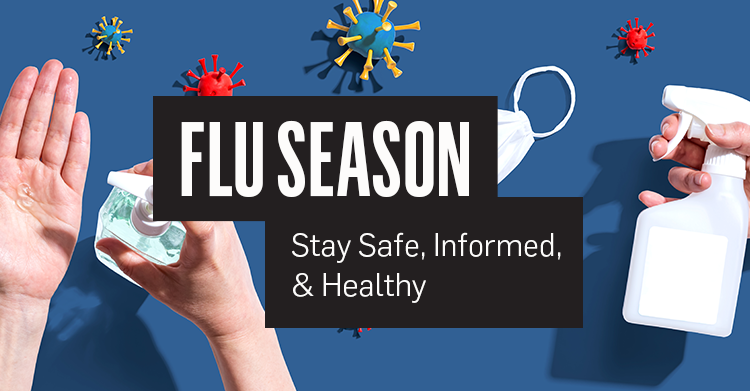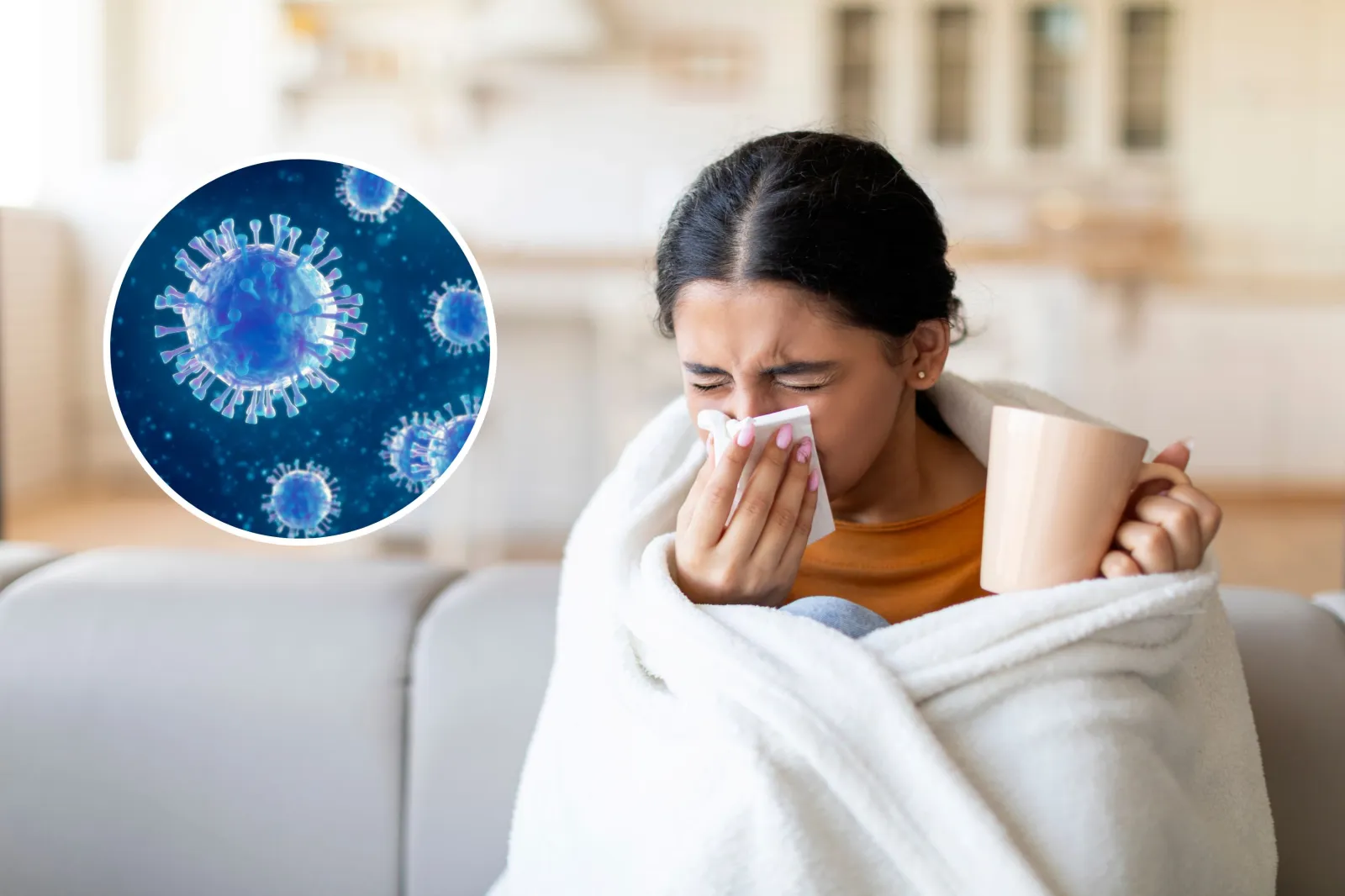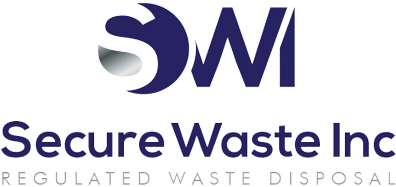Don’t Let Your Infectious Medical Waste Box Get Wet! Secure Waste Provides Expert Solutions For Keeping Your Medical Waste Box And Contents Dry And In Compliance.
What does “Secure Waste” mean in the context of ensuring that the medical waste box remains dry and free from moisture? This is an important question that we will address. But first, let’s clarify what medical waste is and what constitutes a medical waste box.
What Is Medical Waste? And Updated Review
Secure Waste explains how the World Health Organization (WHO) defines and explains Medical Waste, which encompasses various types of waste generated from healthcare activities. These include used needles and syringes, soiled dressings, body parts, diagnostic samples, blood, chemicals, pharmaceuticals, medical devices, and radioactive materials.
Effective waste management is a critical component of health care, as improper handling of medical waste can expose healthcare workers, waste handlers, and the surrounding community to infections, toxic substances, injuries, and environmental pollution.
Approximately 15% of the total waste generated in healthcare settings is classified as hazardous, including infectious, chemical, or radioactive materials. Alarmingly, a 2010 report indicated that unsafe injection practices led to an estimated 33,800 new HIV infections, 1.7 million hepatitis B infections, and 315,000 hepatitis C infections.
Enhancing attention and diligence in handling medical waste is crucial to mitigating the health risks of improper medical waste management. This includes understanding the potential exposure to infectious agents and toxic substances. Long-term improvements in healthcare waste management necessitate strong commitment and support from government bodies.
In 2014, the World Health Organization (WHO) published a comprehensive guidance document titled “Safe Management of Wastes from Health Care Activities.” This guide outlines essential elements such as the regulatory framework, planning and waste minimization strategies, recycling options, proper handling, storage and transportation methods, treatment and disposal techniques, and training for health care personnel.
The World Health Organization defines medical waste, which the U.S. Environmental Protection Agency also recognizes with similar guidelines. Medical waste is produced in healthcare environments, including hospitals, physicians’ offices, dental practices, blood banks, veterinary clinics, and medical research laboratories. This type of waste may come into contact with blood, body fluids, or other potentially infectious materials. It is commonly called regulated medical waste due to its potential health risks.
What Is A Medical Waste Box?
Standard Medical Waste Box – Overall Size L x W x H: 17.5″ x 17.5″ x 24″
- Capable of holding up to 40 lbs.
- Use: Packaging, transporting, and disposal of medical/biohazardous/infectious medical waste
- Delivered box comes with one (1) red/biohazard liner bag
- Approved for disposing of locked, disposable sharps containers
- Made for single use | One time use only
- View proper and prohibited items for medical waste box disposal
- Safety Note: Never dispose of needles directly into the medical waste box/red bag
Do you Need Medical Waste Disposal ” Click Here ” For A FREE Waste Estimate And Secure Waste Solutions For Biomedical Waste Management.
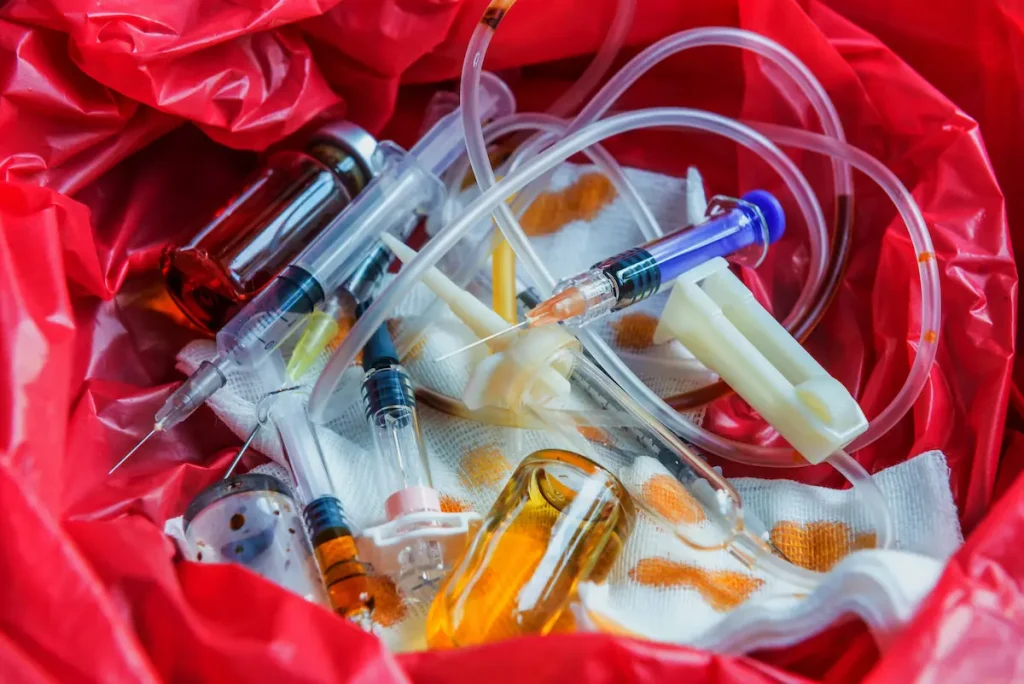
The medical waste biohazard box must remain dry at all times Exposure to moisture can compromise safety and hygiene rendering the waste unsuitable for transport by the disposal company Therefore adherence to this guideline is critical to ensure proper handling and disposal of medical waste
Medical Waste Use Pro Tips: A Quick Take
To ensure the safe and effective handling of all loose medical waste, it is imperative to place it inside a designated medical waste box or a reusable tub container.
Each medical waste box or tub must be equipped with a biohazard liner. This liner is typically composed of sturdy material, such as a red biohazard bag that is at least 1.5 mils thick and provides essential protection against leaks and contamination.
It is crucial to never dispose of loose sharps—including needles, scalpels, or broken glass—directly in medical waste without first placing them in an approved sharps container. This specialized container is designed to safely collect and secure hazardous sharp objects, minimizing the risk of injury or contamination.
Once complete, standard-approved sharps containers can be securely placed within the medical waste box. It is vital to ensure that these containers are tightly sealed to prevent needles from escaping into the surrounding waste, safeguarding workers and the environment.
The predominant methods for processing medical waste are autoclaving and incineration, both recognized as standard practices in the industry. While alternative disposal options may exist, these two methods are generally the most effective. For example, all pathological waste is most suitably disposed of through incineration, eliminating the risk of disease transmission.
Please consult your medical waste management company and review local state regulations, which vary considerably. Staying informed about specific guidelines will ensure compliance and promote a safer, more efficient waste management process.
Are you Ready? Now, Let’s Talk About Keeping The Medical Waste Box From Getting Wet.
In summary, keeping your medical waste box dry is not just a precaution — it’s essential for the safety and effectiveness of the entire waste management process.
I want you to know that ensuring your medical waste box remains dry is paramount for safety and compliance. But what does this truly entail?
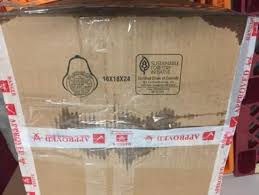
Most infectious medical waste transport and disposal companies employ two distinct container types for waste disposal. The first is a sturdy plastic or rubber tub, usually ranging from 28 to 32 gallons in capacity.
This robust container is meticulously designed to withstand various challenges, such as water accumulating on the floor, splashes from sinks, or other environmental contaminants, thereby protecting its contents.
In contrast, many companies use the traditional biohazard box, typically cardboard. This standard cardboard box is particularly vulnerable and must always be kept dry. If it inadvertently ends up on the floor—where moisture could seep in—swift action is essential to relocate it to a safer, more secure area. To mitigate any risk of water damage, consider using a dolly or cart to elevate the box off the ground, ensuring it remains untouched by any water hazards.
It’s especially critical to be vigilant about the box’s location, particularly near lab sinks or industrial garden hoses, where it is susceptible to splashes and spills. When a cardboard medical waste box becomes wet, it loses its structural integrity, rendering it prone to collapse.
Imagine the scenario: a driver arrives for pickup only to find the box disintegrating. This poses a serious risk of spillage, creating a messy and hazardous environment and costly consequences for the facility involved.
Repacking the waste may incur additional charges; the receiving disposal facility may refuse to accept the box. Their apprehension is entirely justified; they want to avoid handling biohazard containers on the brink of collapse.
In summary, maintaining the dryness of your medical waste box isn’t merely a precaution; it is a critical responsibility that safeguards both your facility and the broader community.
In conclusion, now that you know how to keep your medical waste box dry, don’t hesitate to contact Secure Waste.
We provide reliable, compliant, eco-friendly medical waste disposal solutions for your facility’s needs. We have expertise in biomedical, hazardous waste, and Sharps container disposal. In addition, we provide customized waste management plans, including secure collection and transport and sustainable disposal practices.
Contact us today for a FREE Waste Assessment, or request a quote online!
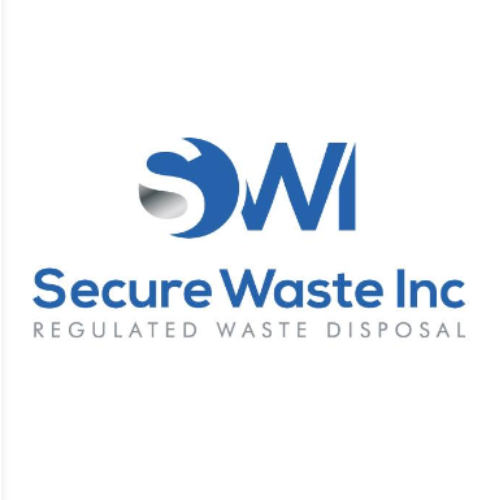
Expert Medical Waste Management: With over 25 years of industry experience, Secure Waste is a trusted local leader in hazardous and biohazardous waste disposal across Maryland, Virginia, and Washington, D.C. Specializing in medical waste management, sharps needle disposal, and biohazard waste removal, the company ensures full compliance with federal, state, and local regulations while prioritizing environmental sustainability.
The company also offers additional services, including secure document shredding and sharps container sales, providing comprehensive solutions for healthcare facilities and businesses. Our cost-effective services help clients maintain regulatory compliance without unexpected costs.
With a commitment to customer satisfaction, Secure Waste offers tailored waste management plans that align with industry best practices. Their team of experts provides reliable, timely, and compliant services, making them the preferred choice for medical waste disposal. For a free waste quote or more information, visit www.securewaste.net



